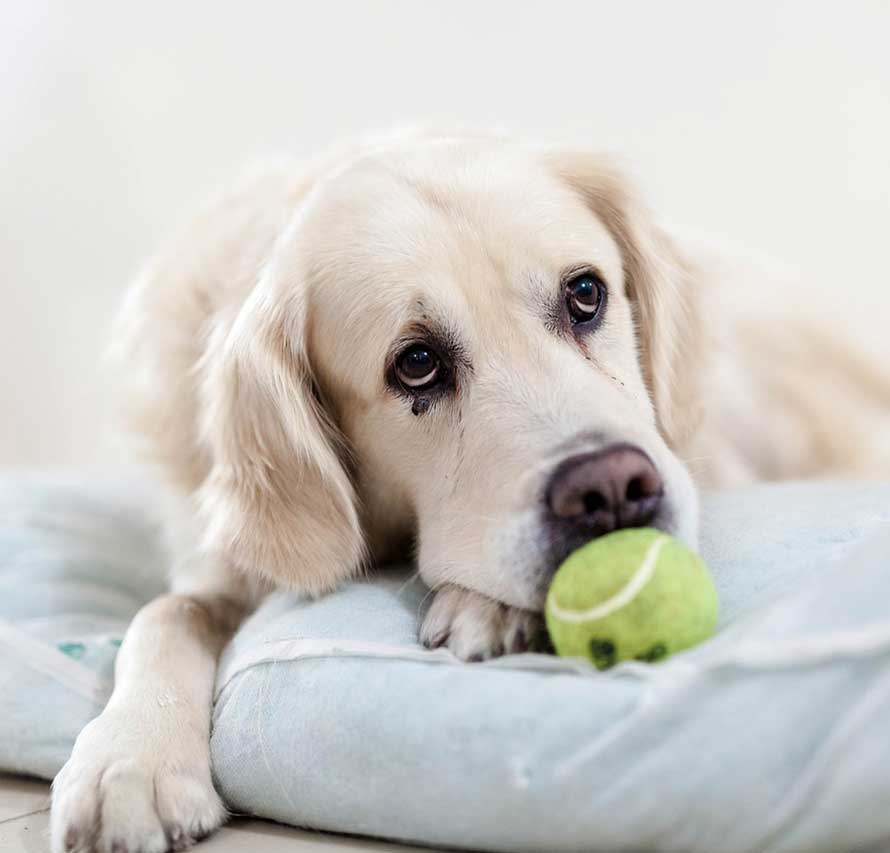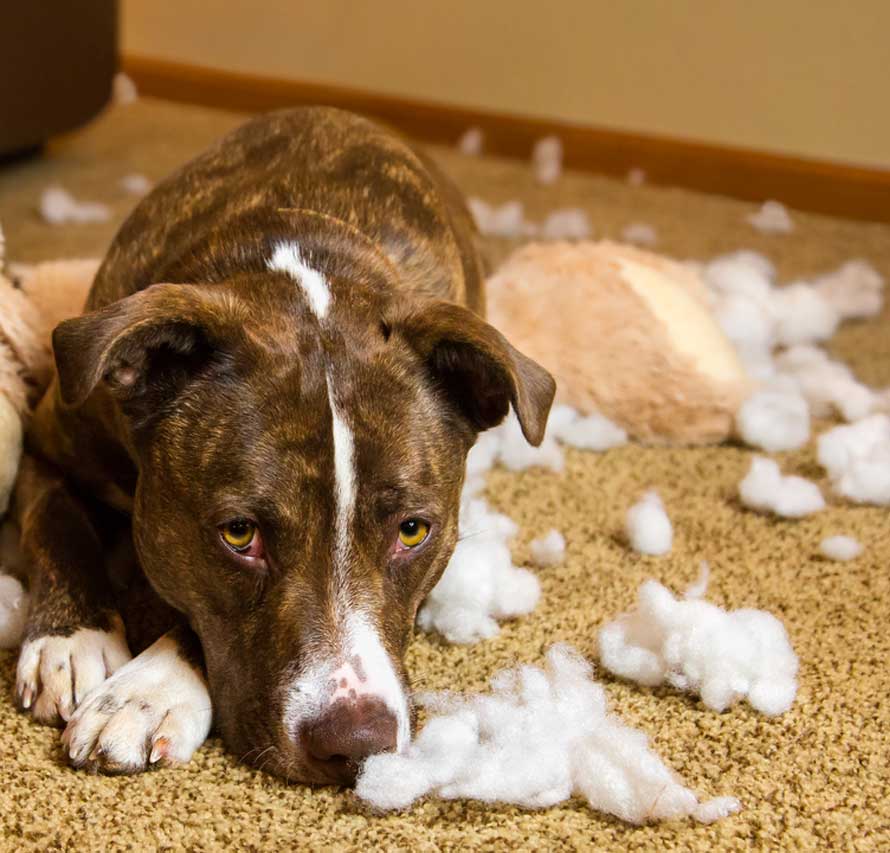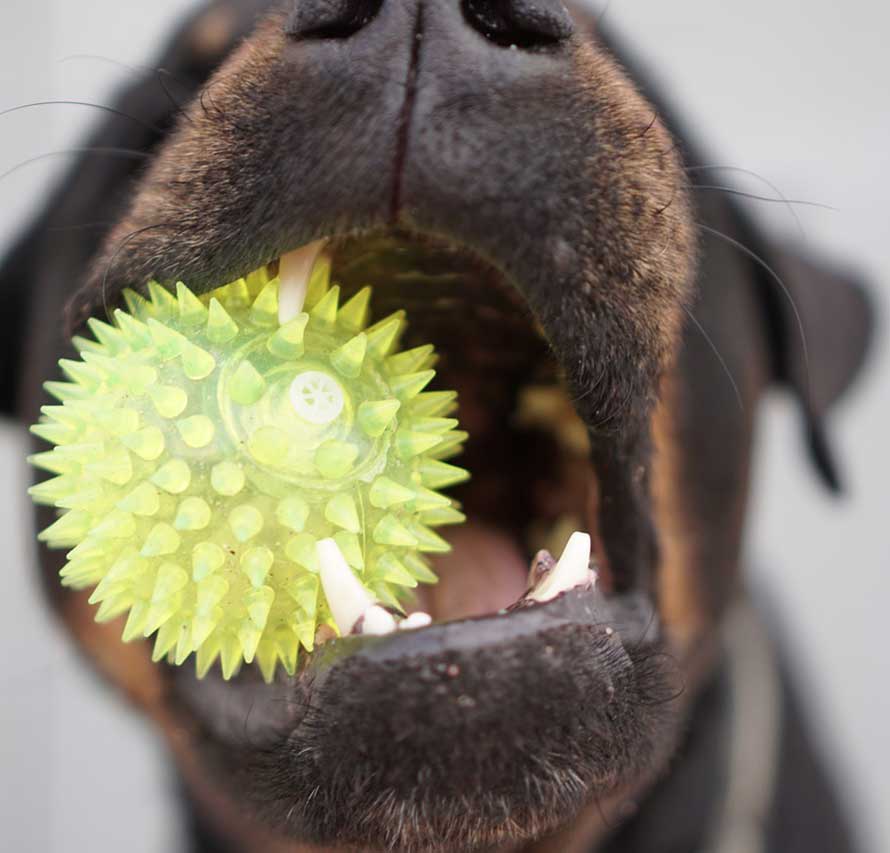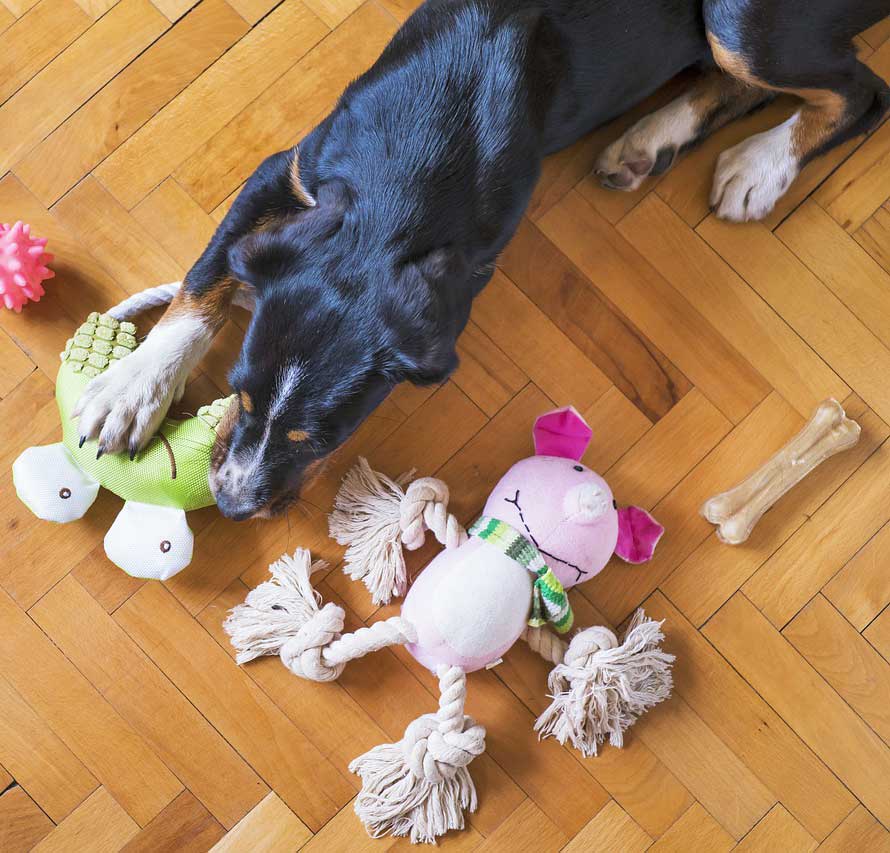What is separation anxiety in dogs?
Separation anxiety in dogs is one of the most common problems pet parents face. It’s also one of the main reasons that drives them to book Sidelick daycare services: their dogs just can’t be left alone. Moreover, separation anxiety can translate into many unpleasant symptoms, which we will develop in this article. We will also suggest ideas on how to tackle it, not just during the early stages of puppyhood but throughout all stages of a dog’s life.

Identifying separation anxiety in dogs
Depending on the level of separation anxiety they suffer from, dogs will manifest bad behaviors (from a human’s perspective). These include (but are not limited to) drooling, panting, crying, howling, barking, whining, urinating, defecating, destroying the surrounding (furniture), pacing…
If your dog is displaying anyone or any combination of these behaviors when you leave them alone, then you’re going to want to read the upcoming segment.

Adopting the right mindset
Dogs can develop separation anxiety at any point in their lifetime. Yet, when thinking about dog training, one only thinks of potty training or basic commands such as sit, down and fetch. However, teaching a dog to enjoy being alone should be part of the ideal training routine, because it is a proactive way to avoid facing this issue. You want to build the confidence of dogs in their home environment, even in your absence.
In order to do so, you want to modify the dog’s perception of alone time – adapting to your schedule. Similarly to most training strategies, you need to create positive associations, focusing on calm and serenity instead of anxiety and fear. Because it heavily relies on conditioning, it takes a little bit of time and effort to get the dog to understand the dynamics of you leaving and you coming back for them. As you progress, you’ll be able to boost your dog’s trust that you’ll be back and eventually stretch your absence for longer periods.
Training for separation anxiety
If you’re going on that journey, you must know that you need to be calm and assertive, very confident that your efforts will pay off. If you’re nervous about it, your dog could pick up your vibes and you surely don’t want that. Here are a few tips that have proven effective with us:
At Sidelick, we always say that a tired dog is a happy dog, so before leaving your dog alone, make sure that your provided sufficient exercise in order to drain the energy levels.

Avoid making a big fuss about your departure/arrival. If you’re leaving, do so quietly. When you get back, stay calm and avoid cheering and making loud noises. If you dog greets you with a lot of excitement, do not pet him before he calms down.
Work on desensitization exercises. If your dog goes crazy when you pick up your wallet, wear your coat or grab your keys, then you need to break the association between these actions and you leaving. How? Easy! Just grab your keys and don’t leave. Wear your coat every now and then. Find the trigger points and do these actions without the expected outcome (you leaving). That way, that association will eventually die in your dog’s mind over time.
Train your dog to be comfortable in a room without you being present in it. This is done step by step, with lots of patience. Leave the room, wait 10 seconds, get back in and reward calmly with a treat. Repeat the exercise, adding a few seconds every time, until you reach minutes, etc.
Additional do’s and don’ts
The right course of action will transform your anxious dog into being at peace with being alone or staying without you for a bit. However, there are a lot of urban legends out there, so here’s our myth buster selection:
Handing the dog a puzzle toy filled with treats every time you leave: TRUE. This will keep your dog busy, mentally stimulated and happy. Make sure to restrict this game to periods of time while you’re away.

Playing the TV/Radio loudly, as a background music: PARTIALLY TRUE. It can help in some mild cases of separation anxiety in dogs, although solely relying on this is wishful thinking.
Getting angry and shouting NO every time the dog barks: FALSE. This is actually counterproductive. It somehow reinforces the behavior because it gives attention to the dog at the wrong moment, almost as a reward.
Leaving a worn piece of clothing that smells like you before you leave: TRUE. This can help, to some extent, easing the anxiety.
Socialization and patience are key
In many cases, working on a dog’s socialization can definitely help prevent many issues including the development of anxiety. Subsequently, meeting new people, dogs, animals, places and experiences helps in diminishing the extent of a dog’s response to situations – they’ll end up acting like “been there, done that”. Alone time will thus also be part of their pool of experiences that they can respond to lightly, without offering an exaggerated reaction.
The training tips suggested above (counterconditioning and desensitizing) are both excellent methods that take it slow on the dog. Unfortunately, it also means that the results can be a little bit slow so keep in mind that you need to stay patient and might also require assistance from a professional behaviorist. Learn to embrace small victories, take every second of uneventful additional alone time as a win. Hence, always remember to keep your dog busy, mentally stimulated and too tired to be anxious!










Hello, do u have someone that can train my dog from seperation anxiety ? Of course that can visit i dont mean a training center
There are many reasons why dogs like dog beds. From easing anxiety to alleviating joint stress, dog beds have been approved by dogs for years!